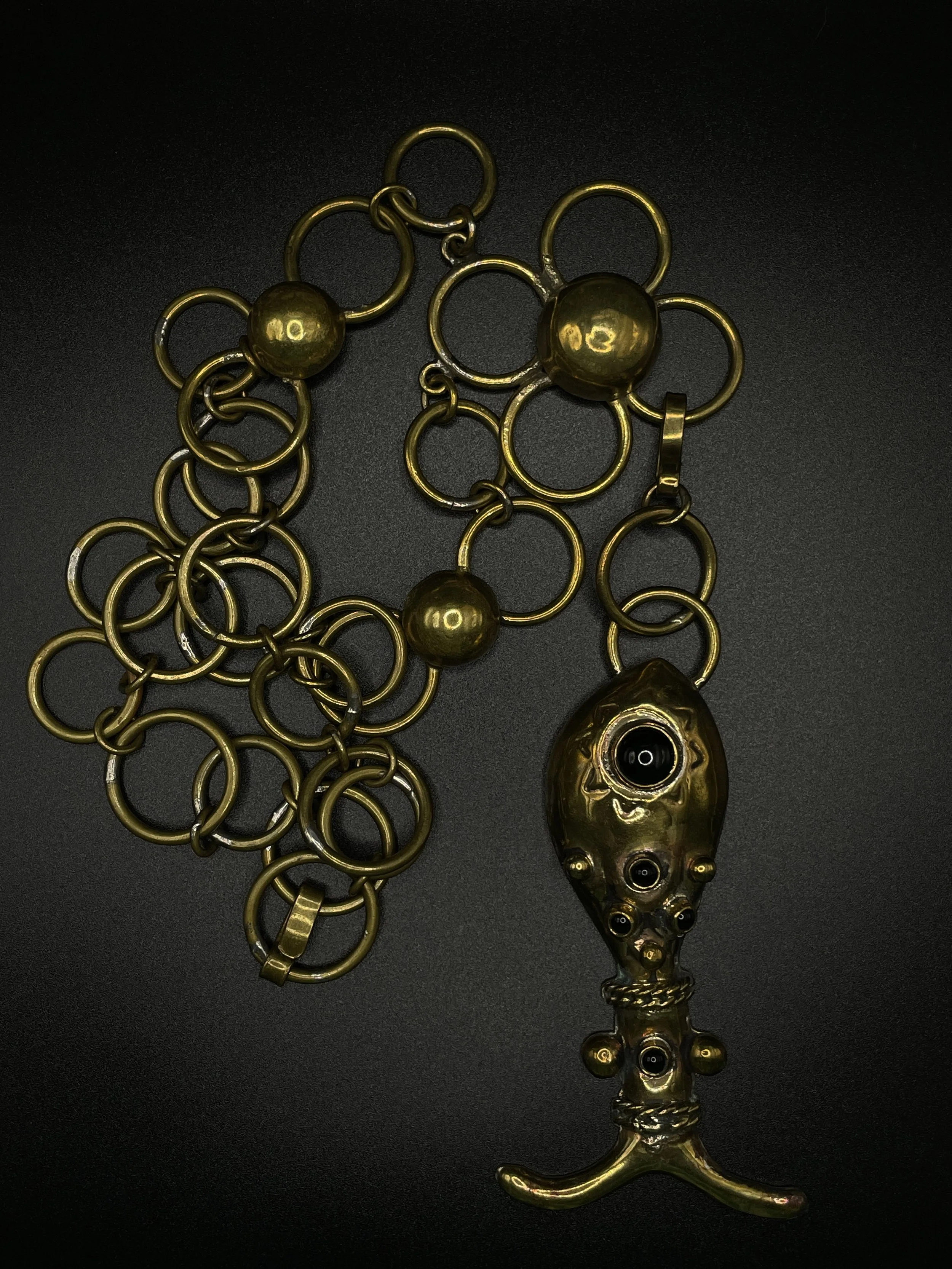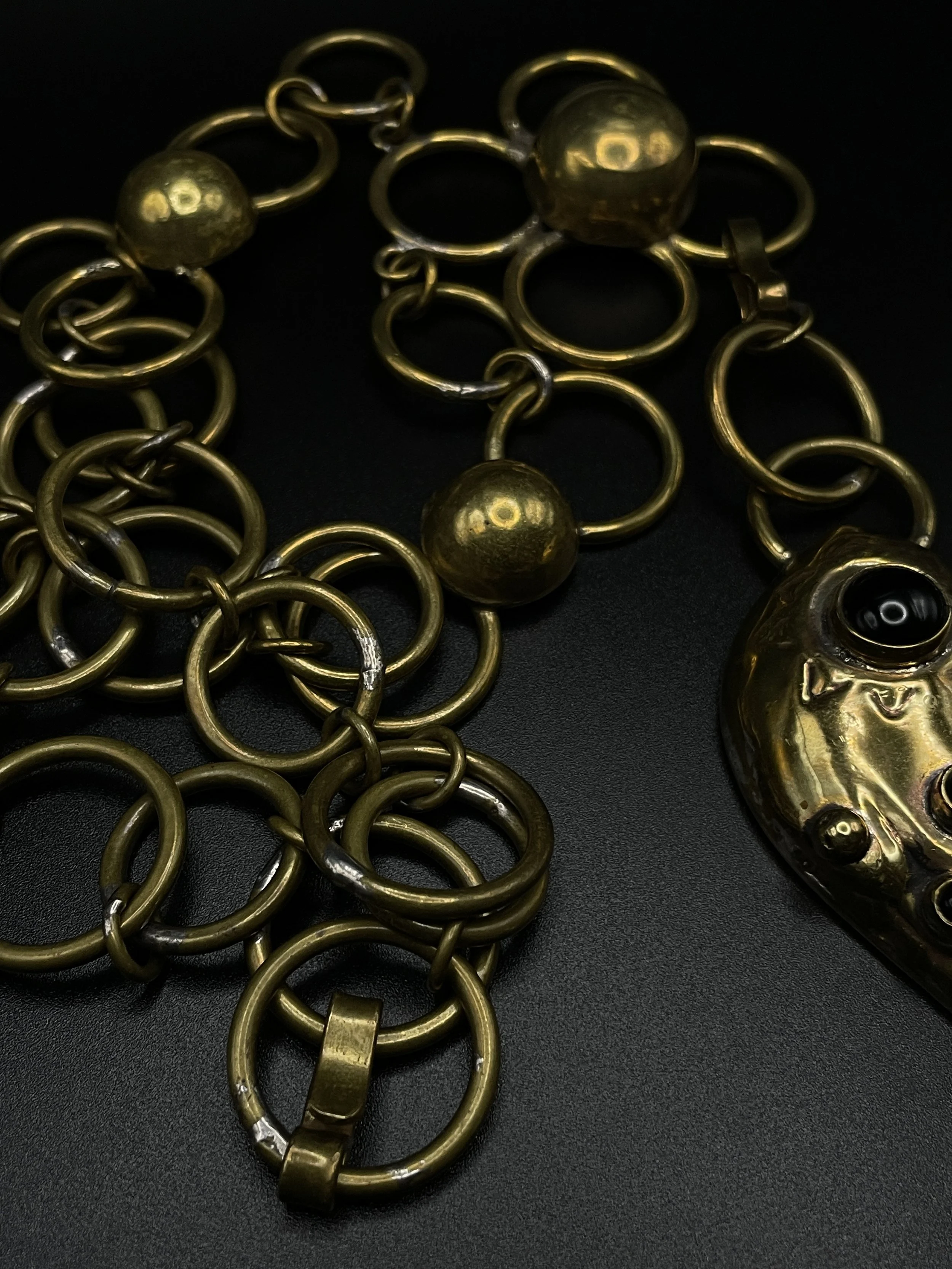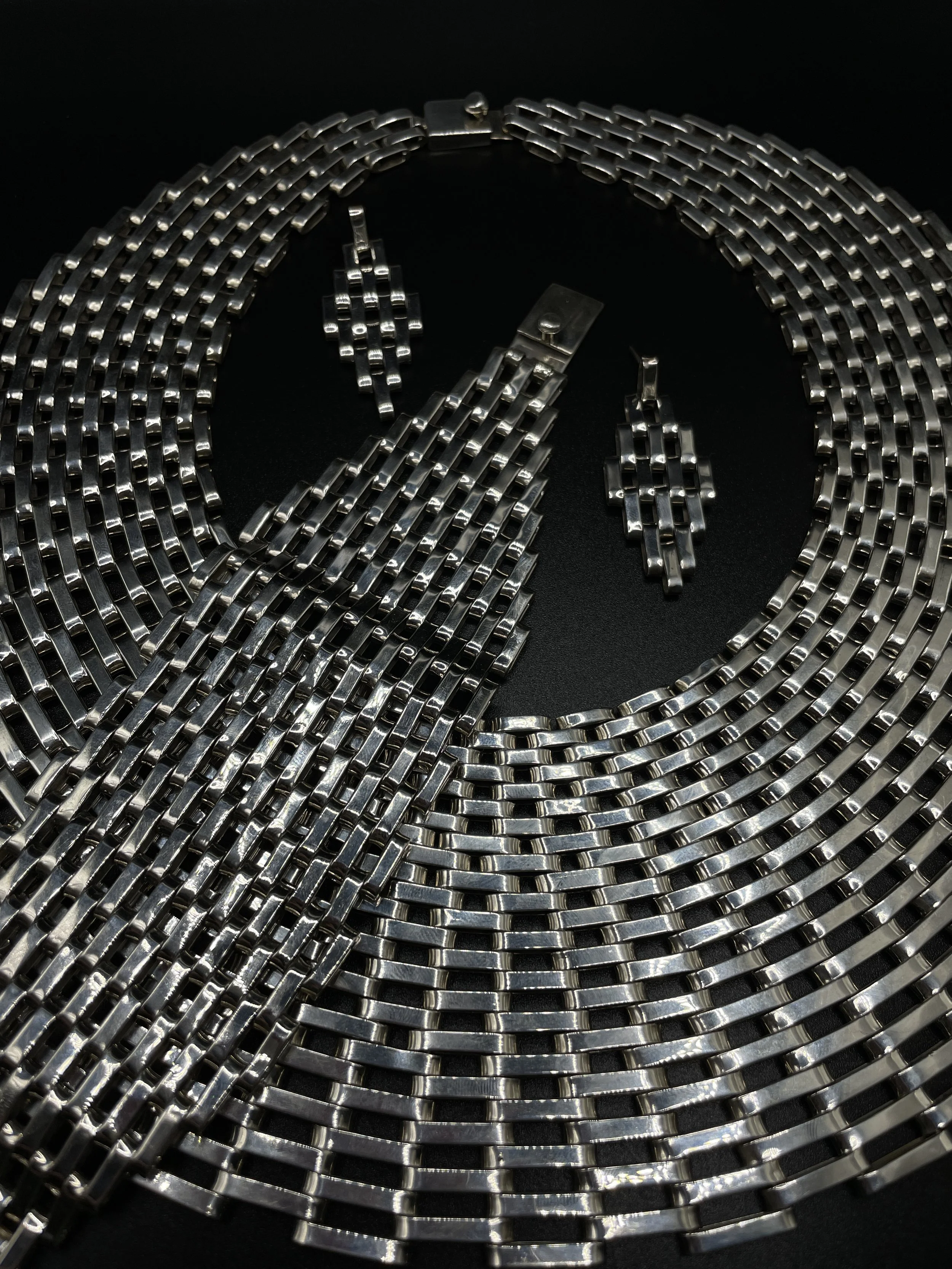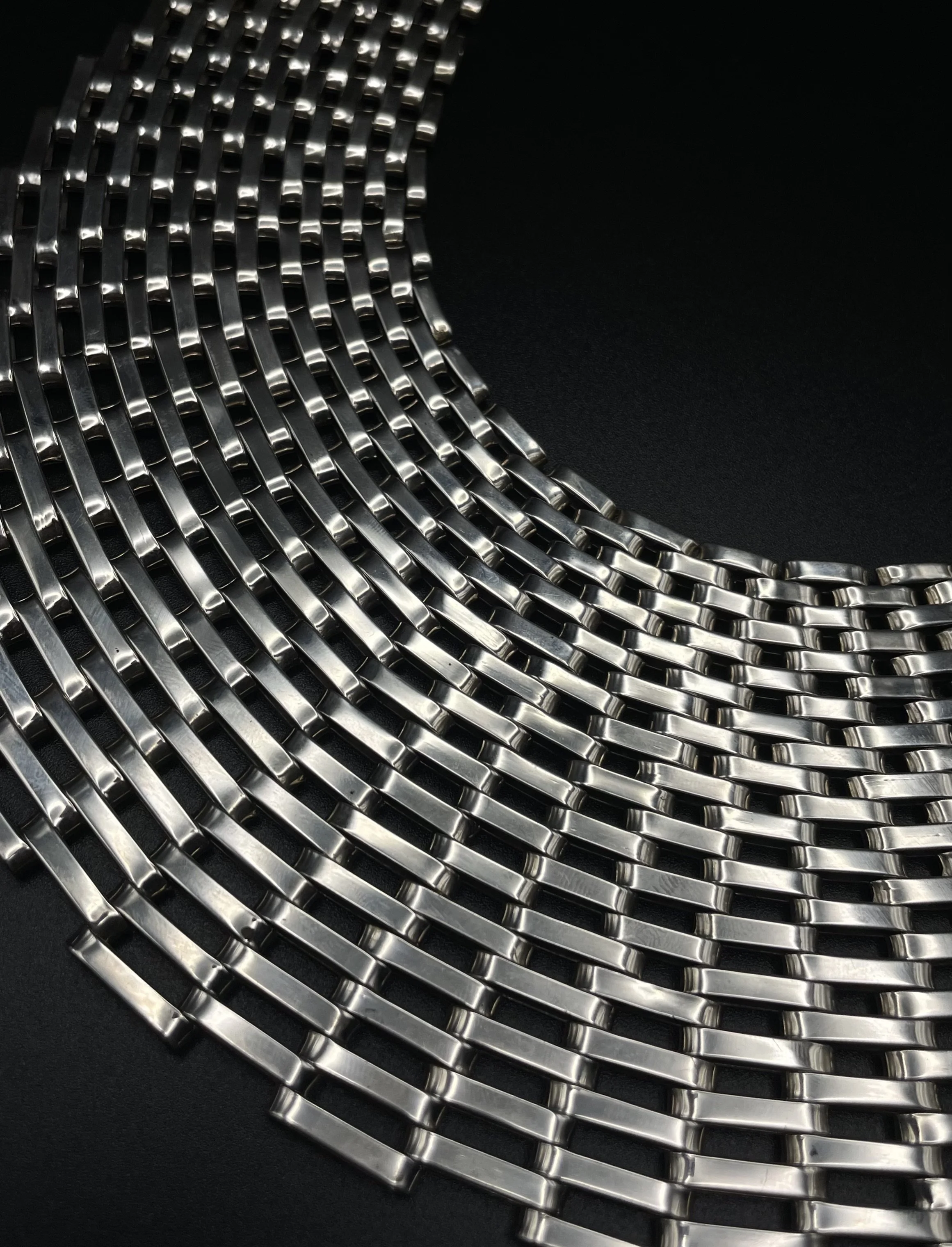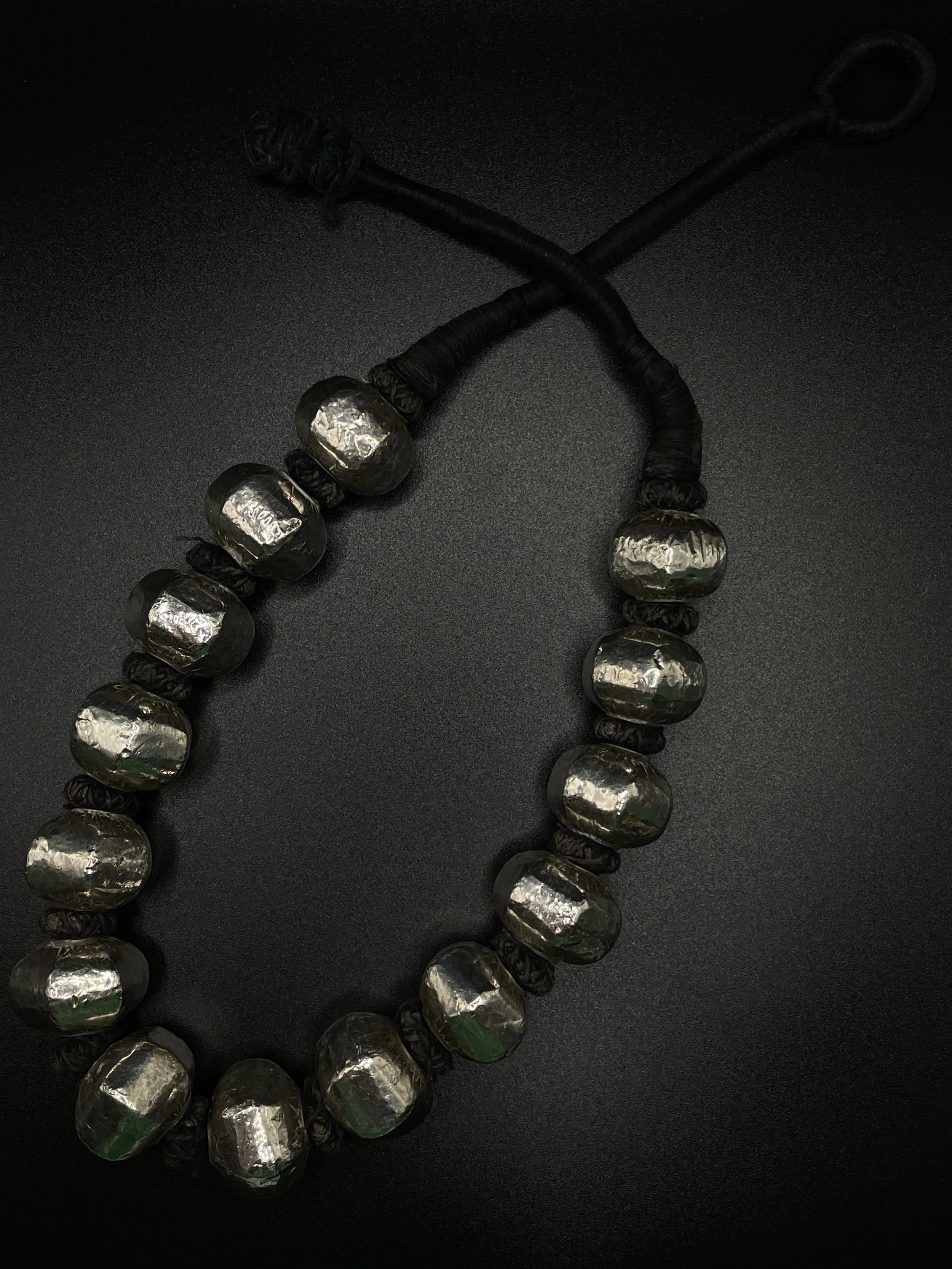Necklace: Royce J. Kohlmeyer "Eagle Boy" Shadowbox Squash Blossom
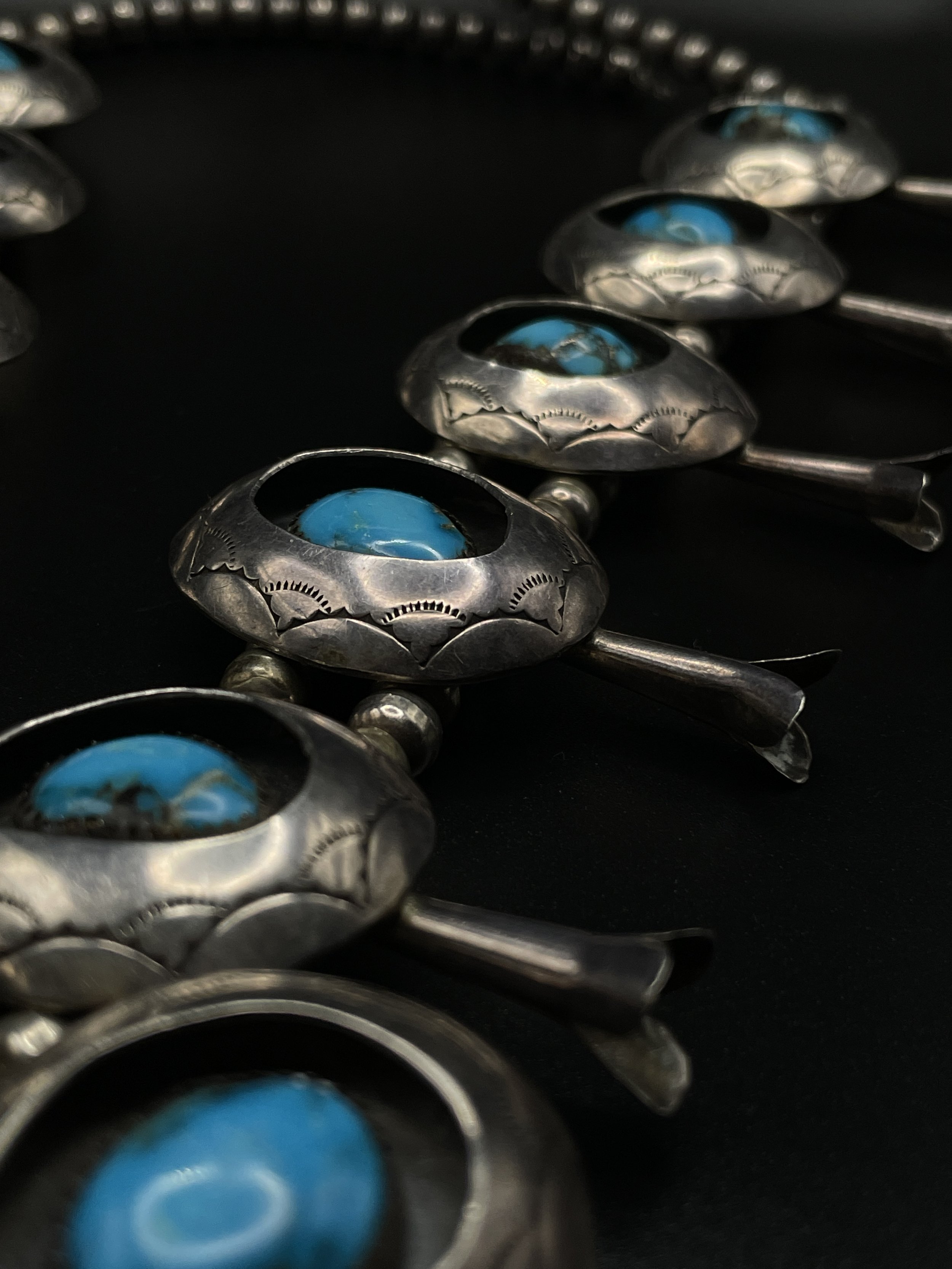
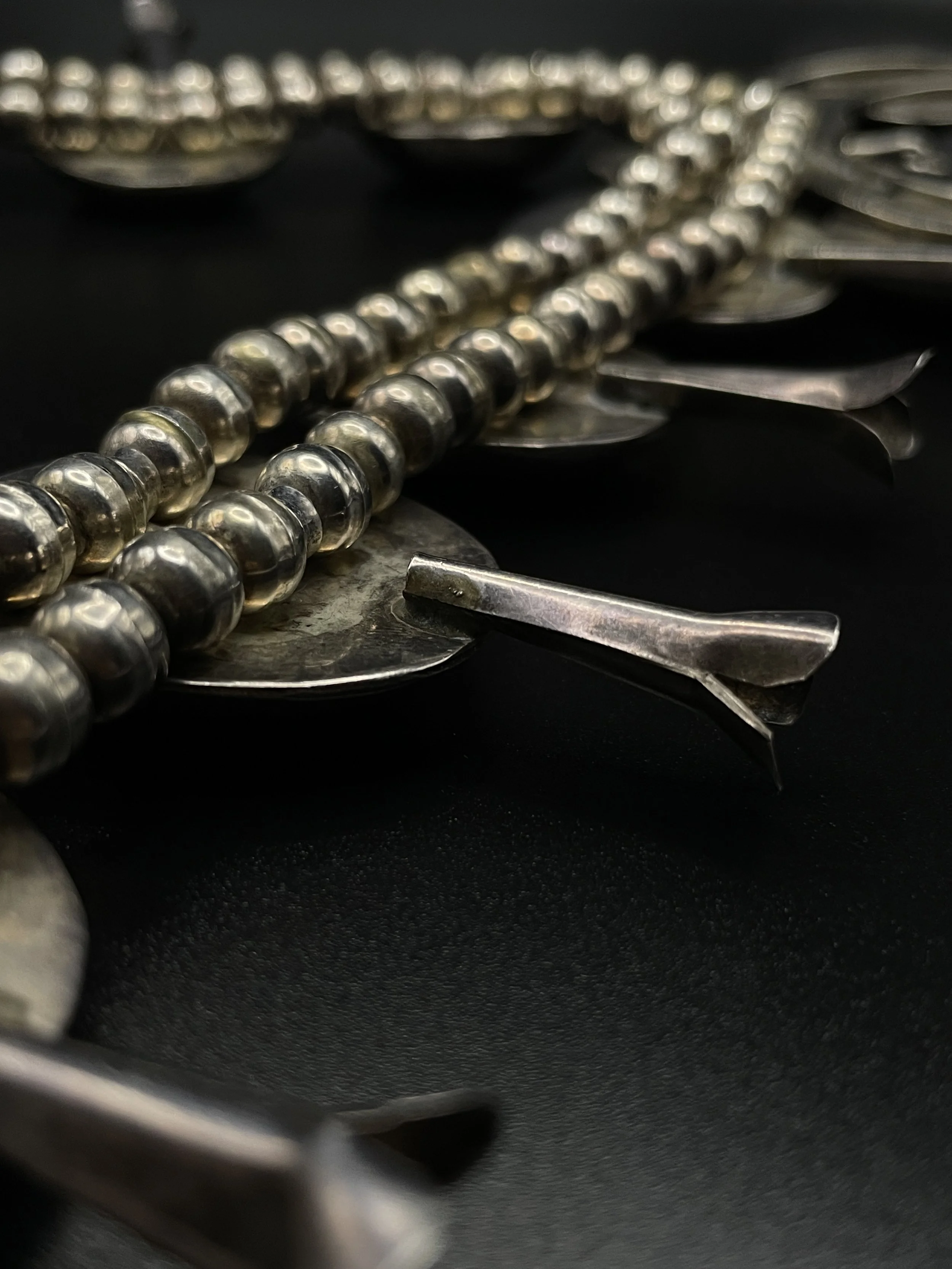


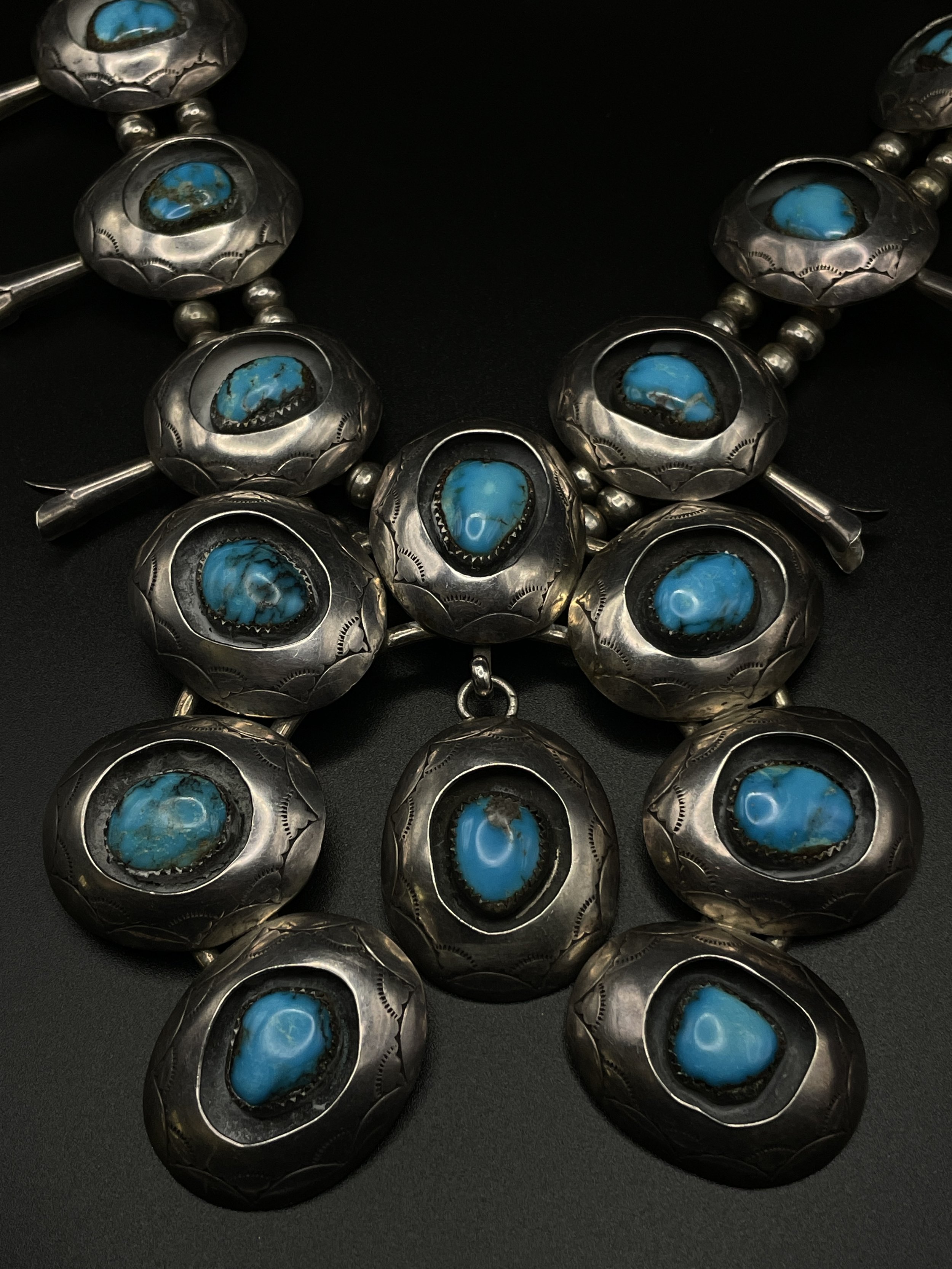


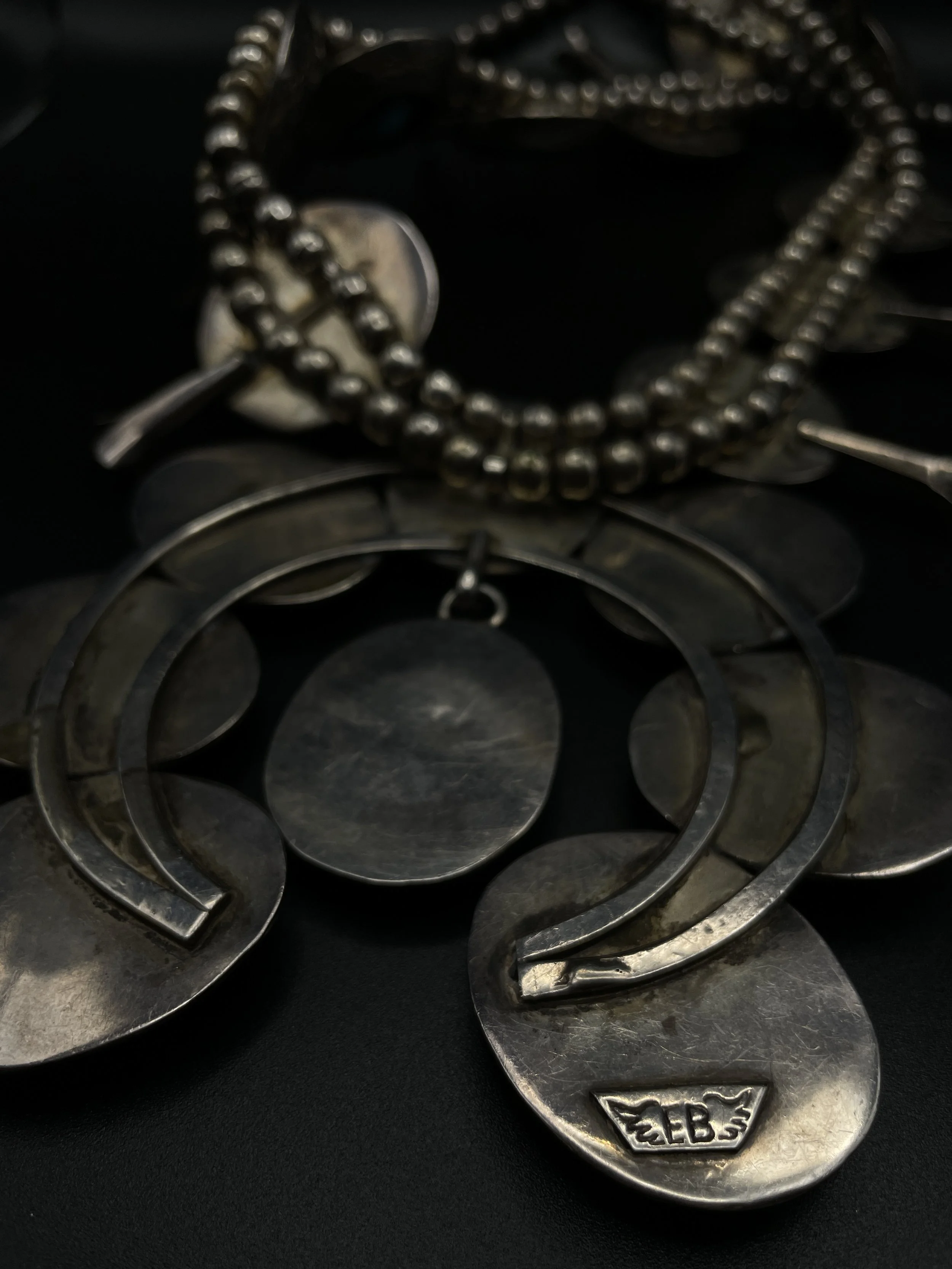
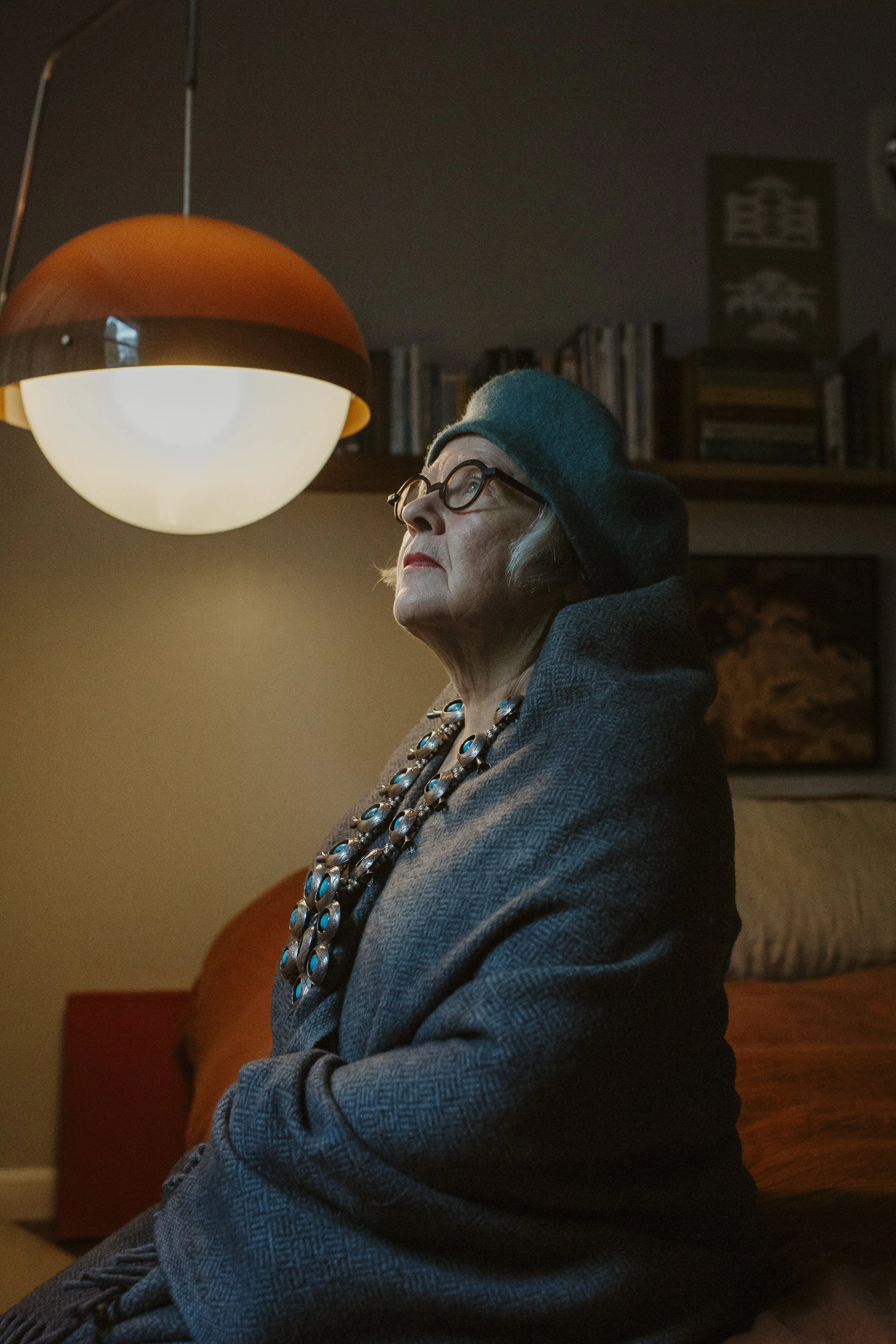


Necklace: Royce J. Kohlmeyer "Eagle Boy" Shadowbox Squash Blossom
This sterling squash blossom is crafted by the highly respected Royce Kohlmeyer—Eagle Boy, who has been active since the 1980’s. He has won multiple awards for his craft over the years and I am happy to be able to offer one of his necklaces in the collection.
The turquoise shadowbox style of the piece is bold and dramatic. The design is the largest in the collection and will satiate the heart of any shadowbox lover. The naja has 8 cabochons and measures almost 5” across and is stamped with his winged “EB” (Eagle Boy) hallmark. It is impressive and not weighted down, so it can be worn all day. The length personally feels perfect.
The 10 blossoms are threaded with two strands of handmade beads that are taught and wired with synthetic wire versus sterling. For this reason, I was able to afford to bring in one of his pieces and the price is adjusted to reflect this note.
It is a fantastic opportunity to bring home a noteworthy piece from a collectable silversmith that would otherwise be offered at a much higher price. I couldn’t pass it up.
Measurements: Necklace: 33” | Naja: 4 3/4” W x 4 1/2” L | Blossoms (10) 2 1/4” W x 1 1/8” L | 285.7 grams.
Growing up with a father from the heart of Texas, squash blossom designs have always been a part of my jewelry exposure. I love them all. I get excited seeing them on the makers who create them, in a case lined together, as well as on the curious folks who wear them. They are pure strength and emit intriguing beauty.
My favorite memories are of the men who would wear them. Always with boots, a jacket, and a hat. Looking very uniquely sharp and wearing their worth. Sometimes at a funeral—styled in black. Those fellas were very cool to me. Someone who had traveled places. Who knows..but those guys looked good wearing such a statement piece. A little one in dusty Texas doesn’t forget that energy easily.
The squash blossom necklace was created in the late 1870s or early 1880s after the native people of the area made contact with Spanish Mexicans. The Navajo, it is believed, were the first tribe to adopt the design, but by the early 1900s, the art form had spread to neighboring tribes, including the Zuni and the Pueblo. -Michelle Graff
There is a lot of talk around the history of the design, especially whether it is a true squash blossom or a throwback to the revered pomegranate seen on the Spanish uniforms and buttons during colonization. The Naja—the pendant, is a prehistoric talisman, but it is said to have been potentially adopted from the Spanish Mexicans or from the plains people—the Shawnee or Delaware. For those who enjoy historic symbolism, Najas with turquoise hanging from their center have been said to represent a baby in the womb.
The squash blossom pieces that I am attracted to the most are the vintage heavy metal ones. First phase, as they are often called, were primarily made of found metal. Sometimes this meant coins before it became illegal to craft with government change. The earliest designs solely consisted of rustic found metal, then came more embellished found silver—coins, followed by the stones. The Najas were traditionally cast silver and the beads were handworked. These days, the necklaces are often embellished with faux stones, the Najas are made from wire or cut from sheet metal, and the beads mechanically made. Still attractive, just different.
Here Are 11 Facts About Old Pawn Jewelry:
"Old Pawn" is a term used for Native American jewelry, made by Native Americans, and worn by Native Americans, not for public production or the tourist trade.
These old pawn pieces were taken to a Trading Post, where the items were pawned for a certain amount of money and then redeemed when the sum was paid back.
The jewelry that is considered "Old Pawn" is extremely rare and valuable to collectors, as a truly authentic piece of jewelry, and made for Native American use.
The term "Old Pawn" can even be used today, as pieces are still pawned to brokers. If the sum of money given in loan for the piece is not paid back in time, the piece will be marked "Dead Pawn" and put out for sale.
“Old Pawn” Jewelry usually refers to the jewelry of older style as well. A piece made from a silver ingot, rather than sheet silver, is the first way pieces were made.
Hand-drawn wire is also an older technique and can easily be identified when put beside a piece of pre-made wire.
Stones in the older pieces will not be as great of quality as some of the pieces made in the 1940s to today. The Native Americans usually found these stones laying on the ground; stones were usually not mined for at that particular time.
The very first pieces of jewelry made by the Navajos did not contain any stones. The first pieces with set stones were made around the 1880s.
A lot of these older pieces have found their way into the market, by means of "Dead Pawn" or by being sold to individuals.
Most of the older pieces that do have stones don't have many of them.
Some examples of the older pieces are horse halter headstalls, bracelets, rings, squash blossom necklaces, concho belts, leather pouches with silver decorations, tobacco canteens, earrings, and Jacla necklaces.
Old pawn jewelry has an incredible story to tell. While you might think you know what old pawn jewelry consists of, we want to make sure you have the facts. Vintage Native jewelry carries quite the cultural legacy, and it’s important to recognize the importance of these longstanding traditional pieces.
-Contributed By: Dillon Marshall
As per standard, very early vintage is not polished unless requested. Silver will naturally polish the more that it is worn.
All jewelry is sold as is & is non-refundable.
All pieces are selected for their high quality condition & uniqueness.

